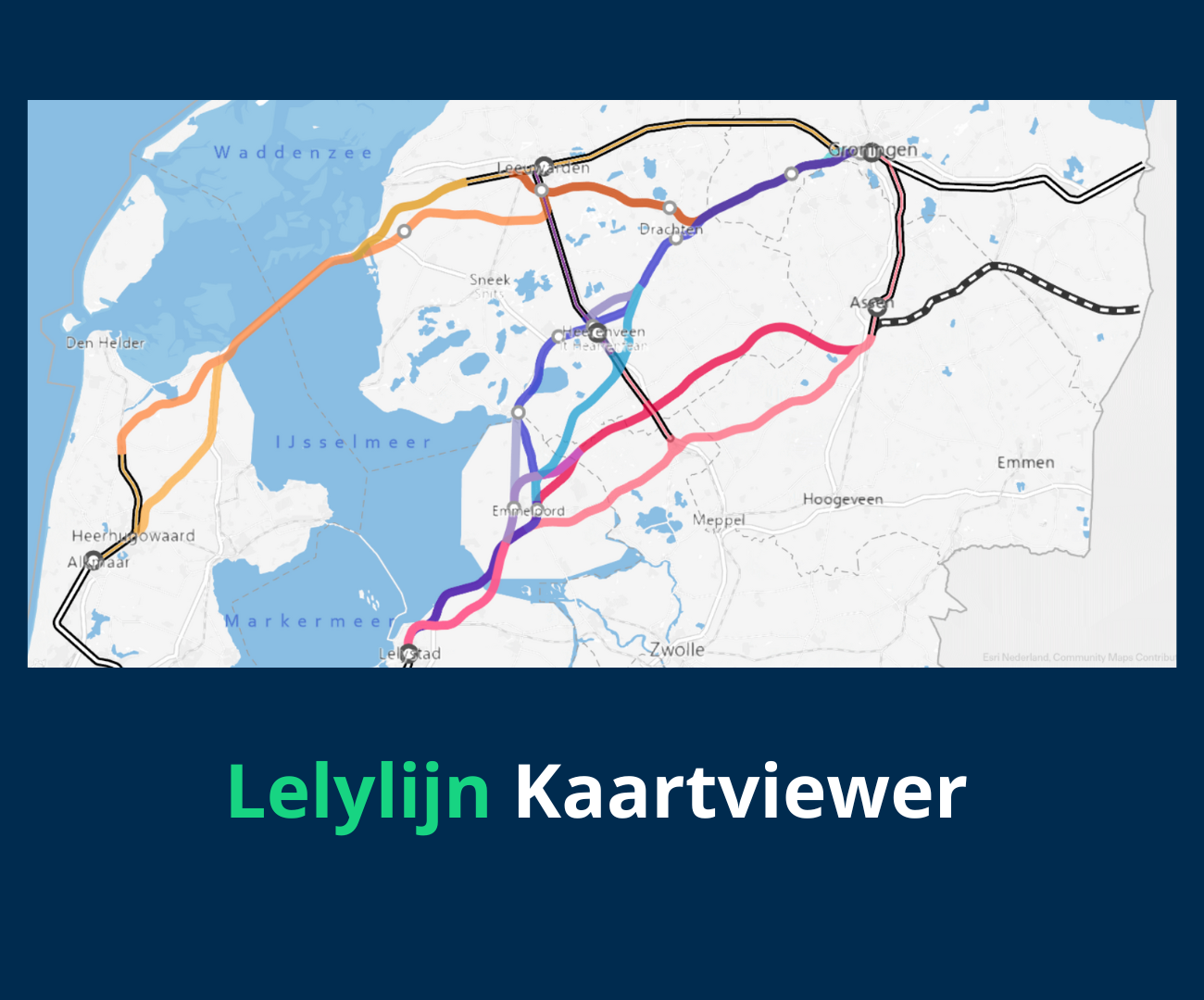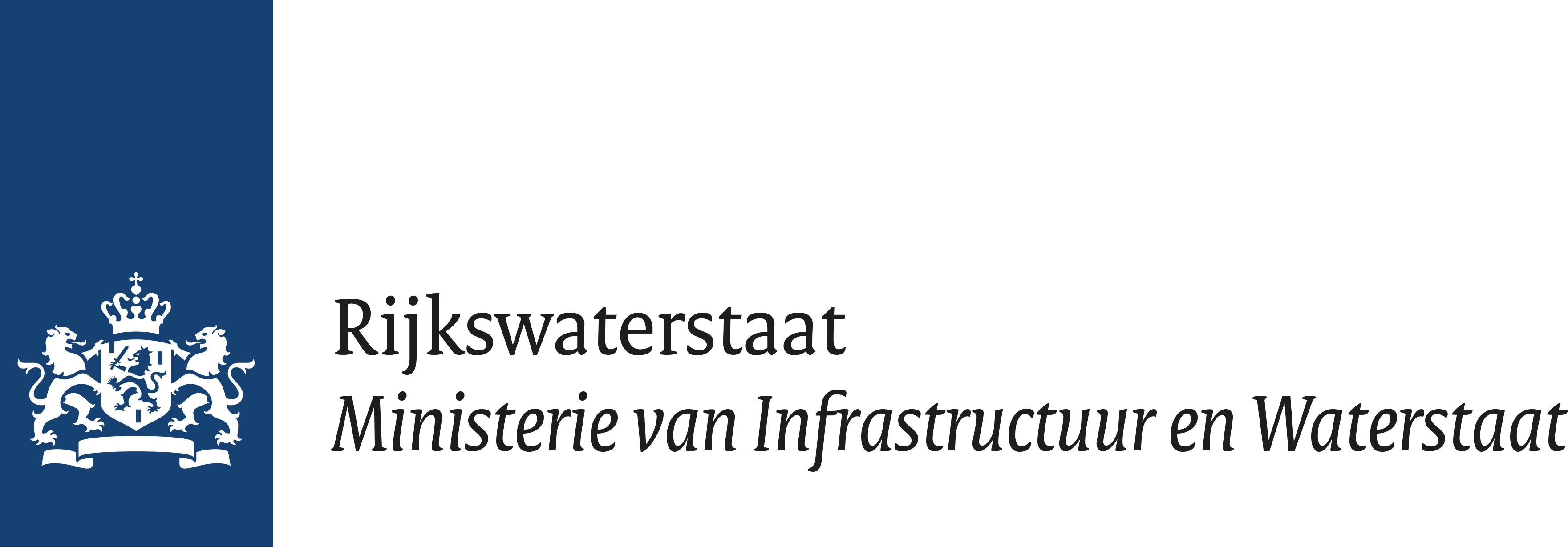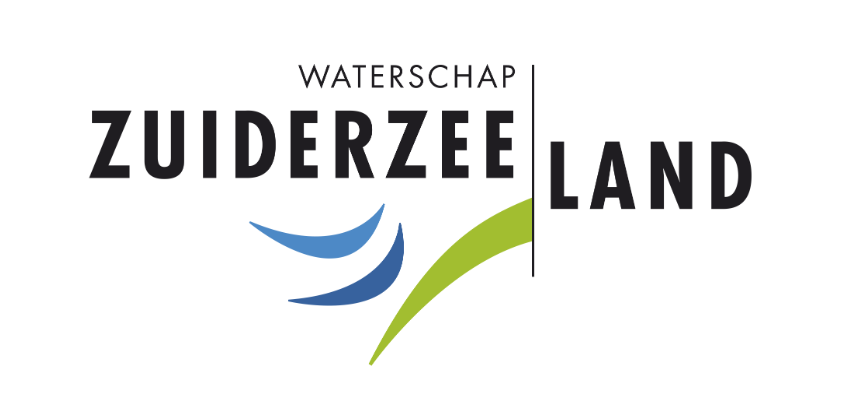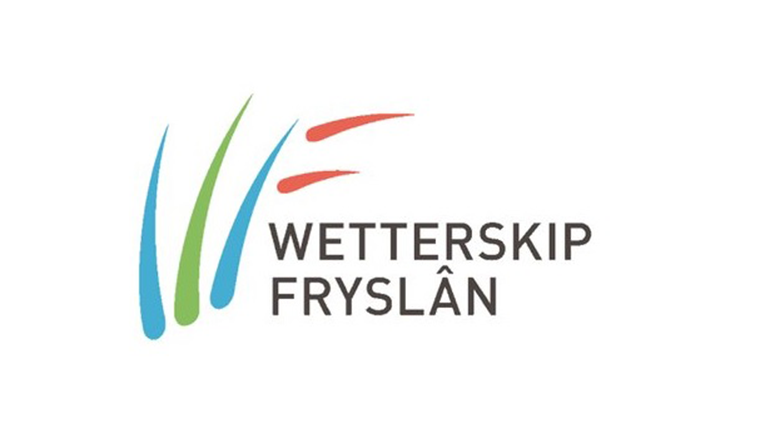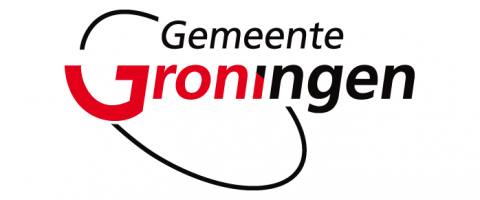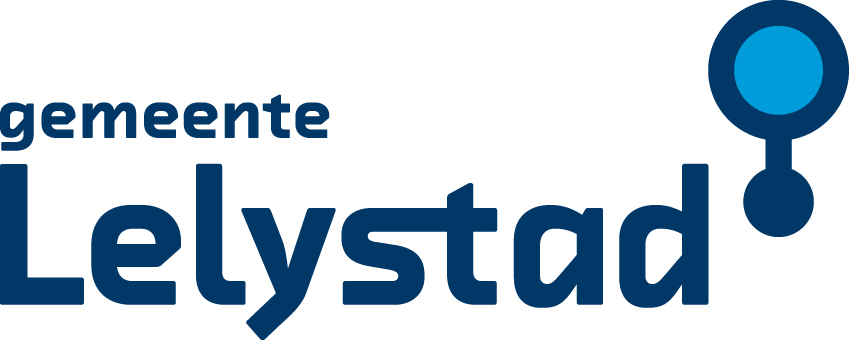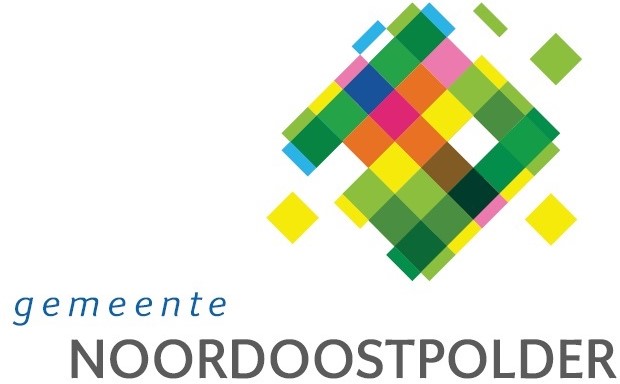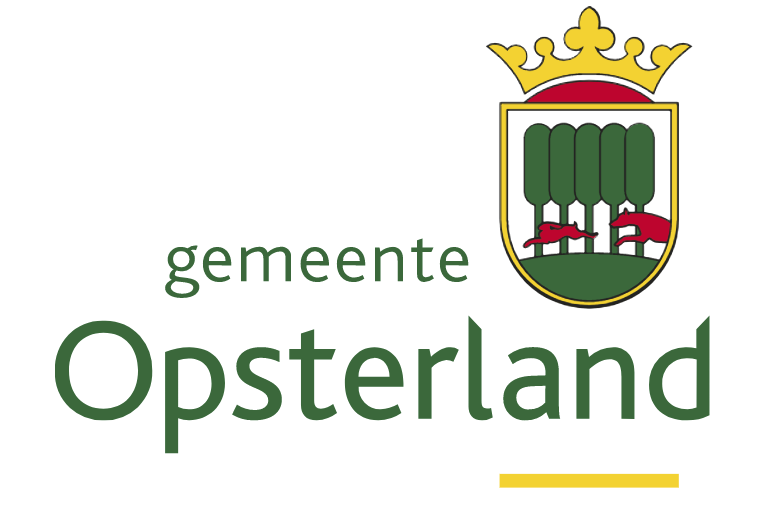FAQ
Onderzoeksresultaten – september 2024
De meest voordelige variant zou 8,2 miljard euro moeten kosten; de meest kostbare 17,2 miljard euro. De middelste variant die qua schattingen de meeste rijtijdwinst en reizigers zou opleveren, zou 13,8 miljard euro moeten kosten. Onderhoudskosten zijn daarin niet meegerekend: die worden geschat op 125 tot 525 miljoen euro per jaar.
Tot nu toe is drie miljard vierhonderd duizend euro gereserveerd voor de Lelylijn door het vorige kabinet. Daarnaast heeft de regio al uitgesproken bij te willen dragen en kan er een Europese aanvraag worden gedaan. De hoogte van die bedragen is echter nog niet bekend.
Regionaal wordt de bereikbaarheid en daardoor de leefbaarheid van dorpen en kleine steden vergroot door een verbeterde mobiliteit. Nationaal wordt de reistijd tussen het Noorden en de Randstad korter. Zo kunnen reizigers uit Groningen veel sneller in Amsterdam zijn dan nu. Afhankelijk van de route die wordt gekozen kan de reistijd zelfs 45 minuten korter worden.
Het Noorden is met de Lelylijn beter aangesloten op de rest van Nederland. En doordat de Lelylijn grote steden met kleinere steden met dorpen aan elkaar verbindt, zijn er meer kansen voor mensen op onderwijs, zorg en banen.
De verzamelingen aan onderzoeken worden voorgelegd aan het Bestuurlijk Overleg MIRT in november 2024. Dan wordt gekeken naar een eventueel vervolg van de Lelylijn. Het BO-MIRT kan besluiten of het project doorgaat naar de Verkenningsfase via de zogenoemde Startbeslissing of dat nog vervolgonderzoek nodig is.
Het Lelylijn-project bevindt zich in de onderzoeksfase van de MIRT-werkwijze. De onderzoeken naar bereikbaarheid en nieuwe ontwikkelingen (NOVEX) zijn nu gereed. De onderzoeken naar brede welvaart en de internationale meerwaarde lopen nog.
De reistijd tussen het Noorden en de Randstad wordt korter. Zo kunnen reizigers uit Groningen veel sneller in Amsterdam zijn dan nu. Afhankelijk van de route die wordt gekozen kan de reistijd zelfs 45 minuten korter worden.
Als de Lelylijn er komt, dan krijgen dorpen een verbeterde verbinding op een groot OV-netwerk. Samen met lokale en regionale OV-aanpassingen zou dat betekenen dat mensen hierdoor dichterbij voorzieningen komen te wonen.
Op dit moment zijn de route en de stations waar de treinen stoppen nog niet bekend. Plaatsen die in elk geval op de route van de Lelylijn liggen zijn Groningen en Lelystad. Alle mogelijke routes zijn in kaart gebracht. Het is de bedoeling dat in het najaar van 2024 een voorlopig ontwerp voor de Lelylijn is vastgesteld.
Binnen de regio is sterk de voorkeur voor een route die langs Emmeloord en Drachten gaat. Andere routes zijn echter ook nog mogelijk.
Uit het onderzoek blijkt dat dagelijks tot 40.000 reizigers gebruik kunnen maken van de Lelylijn. En als er meer huizen worden gebouwd, dan kan dat aantal oplopen tot maximaal 50.000 reizigers. Sommige reizigers reizen een klein stuk met de Lelylijn en andere reizigers gebruiken de hele lijn van Groningen of Leeuwarden naar Amsterdam.
Het onderzoek naar de internationale meerwaarde loopt nog. De Lelylijn is niet alleen regionaal en nationaal, maar ook internationaal relevant. Met de Wunderline zetten we samen met Duitsland een belangrijke stap in de richting. Met de Lelylijn is het verder opwaarderen van deze internationale verbinding een stap dichterbij.
Afgelopen jaar zijn de Europese Commissie (EC) en het Europees Parlement (EP) akkoord gegaan met het toevoegen van de Lelylijn aan het Extended Core netwerk. Eind dit jaar ligt het besluit voor bij de Raad van Europa (Transportraad). Hierin zijn alle ministers van de lidstaten vertegenwoordigd.
Op de Afsluitdijk was jarenlang sprake van een reservering voor een treinverbinding. Deze ruimtelijke reservering is gebruikt om de weg te verbreden naar 2×2 rijbanen. Op de dijk past daarom op dit moment geen treinverbinding. We hebben onderzocht of het bijvoorbeeld mogelijk is de dijk uit te breiden waarop een spoorverbinding kan worden aangelegd.
Doordat de Lelylijn grote steden met kleinere steden met dorpen aan elkaar verbindt, zijn er meer kansen voor mensen op onderwijs, zorg en banen. De komst van de Lelylijn betekent veel voor de regio; dorpen en steden die niet naast de Lelylijn liggen kunnen ook meeprofiteren als de regio nu al nadenkt over de juiste aansluitingen. Een van die aansluitingen is de Nedersaksenlijn: van Groningen naar Emmen. De optelsom van beide nieuwe lijnen, is een enorme verbetering voor heel Noordelijk Nederland en een oplossing voor de opgaven die daar al liggen op het gebied van basisvoorzieningen en vervoerarmoede.
Er zijn drie mogelijke routes voor de Lelylijn onderzocht. Uitgangspunt daarbij is geen of zo min mogelijk schade aan de natuur en natuurgebieden. Pas in de volgende fase worden de routes meer in detail uitgewerkt, dan is ook beter aan te geven wat de effecten op de natuur zijn.
Het projectteam is in overleg met natuurorganisaties en betrokken overheden voor lokale kennis en expertise op een aantal specifieke plekken langs het Bundelingstracé (Natura2000 gebieden). Dat helpt bij het in kaart brengen van natuurwaarden en op welke manier het mogelijk is natuurgebieden te passeren of omzeilen. Daar waar meekoppelkansen zijn, om natuur te verbeteren, signaleren we deze voor de volgende fase van het onderzoek naar de Lelylijn
Algemene informatie over de Lelylijn
De Lelylijn is de voorgestelde spoorverbinding van de Randstad naar Leeuwarden/Groningen, die door Flevoland en Fryslân loopt. Daarop moet een snelle trein gaan rijden die onderweg alleen in een paar grote plaatsen stopt, indien mogelijk gecombineerd met een stoptrein die wel vaker kan stoppen.
Er is om meerdere redenen behoefte aan een Lelylijn:
- De huidige spoorverbinding naar Noord-Nederland via Zwolle-Meppel is onvoldoende betrouwbaar en de reistijden zijn lang. Met een Lelylijn worden reistijden verkort en wordt de verbinding Flevoland – Noord-Nederland veel betrouwbaarder.
- Steden als Emmeloord en Drachten hebben geen station. Het is de bedoeling dat de Lelylijn wel bij deze plaatsen gaat stoppen. Mogelijk komen er ook andere nieuwe stations. De bereikbaarheid in Noord-Nederland neemt daardoor toe.
- Reizen met het openbaar vervoer is duurzamer dan reizen met de auto. Een nieuwe snelle treinverbinding draagt daarom bij aan het reduceren van CO2.
- Een treinverbinding heeft een positief effect op het vestigingsklimaat in Noord- Nederland en kan zorgen voor meer economische ontwikkeling en banen.
- De bevolking in heel Nederland, ook in Noord-Nederland, zal nog groeien waardoor er meer behoefte is aan openbaar vervoer.
De website Lelylijn.nl is van de initiatiefgroep Lelylijn.
De initiatiefgroep heeft als missie de spoorverbinding tussen Noordelijk Nederland en de Randstad op de politieke agenda te zetten. Het uiteindelijke doel is dat de spoorlijn Lelystad, Groningen, Leeuwarden met elkaar verbindt via in elk geval Emmeloord, Heerenveen en Drachten.
Nee. Een definitief besluit over de aanleg van de Lelylijn moet nog worden genomen. Ook de route van de Lelylijn is nog niet vastgesteld.
In september 2024 zijn er onderzoeksresultaten bekend gemaakt. De verzamelingen aan onderzoeken worden voorgelegd aan het Bestuurlijk Overleg MIRT in november 2024. Dan wordt gekeken naar een eventueel vervolg van de Lelylijn. Het BO-MIRT kan besluiten of het project doorgaat naar de Verkenningsfase via de zogenoemde Startbeslissing of dat nog vervolgonderzoek nodig is.
Op dit moment zijn de route en de stations waar de treinen stoppen nog niet bekend. Plaatsen die in elk geval op de route van de Lelylijn liggen zijn Groningen en Lelystad. Op dit moment brengen we alle mogelijke varianten van de spoorverbinding in kaart. Het is de bedoeling dat in het najaar van 2024 een voorlopig ontwerp voor de Lelylijn is vastgesteld.
Binnen de regio is sterk de voorkeur voor een route die langs Emmeloord en Drachten gaat. Andere routes zijn echter ook nog mogelijk.
Nee, er is nog geen definitief ontwerp van de Lelylijn. De projectorganisatie coördineert het onderzoek naar de Lelylijn en brengt alle mogelijke varianten van de spoorverbinding in kaart. Naar verwachting wordt in het najaar van 2024 een voorlopig ontwerp voor de Lelylijn vastgesteld. Dit is nog steeds een ontwerp op hoofdlijnen, verdere uitwerking is daarna nog nodig.
Er is nog geen definitieve snelheid vastgesteld voor de treinen op de Lelylijn. Hoogstwaarschijnlijk hebben de treinen op deze spoorverbinding een hogere snelheid dan de huidige treinen op het bestaande spoorwegnet. De snelheid hangt onder andere af van de route van de spoorlijn en van het aantal stations waar de treinen stoppen.
Op dit moment is de route en de plek van de spoorverbinding nog niet vastgesteld. Plaatsen die in elk geval op de route van de Lelylijn liggen zijn Groningen en Lelystad. Er is onder andere onderzoek gedaan naar de mogelijke routes / alternatieven voor de Lelylijn.
Bekijk hier de onderzoeksresultaten die in september 2024 zijn bekend gemaakt.
De Lelylijn is in eerste instantie bedoeld voor personenvervoer. Toch zou de spoorlijn ook geschikt kunnen zijn voor goederenvervoer. Het is nu nog niet duidelijk of de Lelylijn wordt ontworpen en gebouwd voor personenvervoer en goederenvervoer. Dit wordt meegenomen in het onderzoek naar de Lelylijn.
De projectorganisatie Lelylijn coördineert het onderzoek naar de Lelylijn. Alle mogelijke alternatieven van de spoorverbinding worden in kaart gebracht. Belangrijke aandachtspunten hiervoor zijn de gevolgen voor de welvaart, de bijdrage aan de landelijke woonopgave en de economische structuur van het noorden van Nederland. Ook wordt het vraagstuk rondom natuur en landschap uitgewerkt en onderbouwd en er wordt gekeken of de Lelylijn kan aansluiten op verbindingen naar andere landen. De betrokkenheid van provincies, gemeenten, waterschappen en andere belanghebbenden hierbij is erg belangrijk.
De projectorganisatie Lelylijn werkt met verschillende werklijnen:
- Omgevingsmanagement en Participatie
Het doel van dit onderdeel is om een duidelijk beeld te krijgen van wat inwoners en andere betrokkenen belangrijk vinden, wat hun wensen zijn, en waar ze zich zorgen over maken. - Onderzoek naar de alternatieven voor de Lelylijn
De verschillende opties voor de Lelylijn worden onderzocht (zoals de verschillende routes). Ook worden de haalbaarheid en de kosten onderzocht. - Ontwikkelperspectief
In het gebied waar de toekomstige Lelylijn mogelijk gaat komen, moeten verschillende onderdelen een plek krijgen. NOVEX is het programma dat regie voert bij het leggen van de ruimtelijke puzzel rondom de Lelylijn, in samenwerking met provincies, gemeenten en waterschappen. De kern van de NOVEX-aanpak is het ontwikkelperspectief: een schets van de toekomstige omgeving van de Lelylijn, met een overzicht van wat mogelijk gerealiseerd kan worden. - Afwegingskader
De verschillende opties (alternatieven en varianten) voor de Lelylijn worden beoordeeld en met elkaar te vergelijken. In dat afwegingskader zullen alle relevante factoren die daarbij horen, worden meegenomen.
In de stuurgroep Lelylijn hebben de volgende personen zitting:
René Paas, Commissaris van de Koning (Provincie Groningen) voorzitter
Wino Aarnink, Directeur Openbaar Vervoer en Spoor (Ministerie van Infrastructuur en Waterstaat)
Adriaan Beenen, Regioambassadeur Noord Nederland (Ministerie van Economisch Zaken en Klimaat)
Philip Broeksma, Wethouder (Gemeente Groningen)
Regina Oosting, Afdelingshoofd Gebiedsontwikkeling (Ministerie van Binnenlandse Zaken en Koninkrijksrelaties)
Roger de Groot, Burgemeester (Gemeente Noordoostpolder)
Johan Hamster, Gedeputeerde (Provincie Groningen)
Luzette Kroon, Dijkgraaf (Wetterskip Fryslân)
Jan de Reus, Gedeputeerde (Provincie Flevoland)
Evert Stellingwerf, Wethouder (Gemeente Leeuwarden)
Matthijs de Vries, Gedeputeerde (Provincie Fryslân)
Het projectteam Lelylijn heeft er voor gekozen om 3 basisalternatieven uit te werken die duidelijk van elkaar verschillen. Deze alternatieven moeten breed genoeg zijn om alle mogelijke opties te bekijken. Het bereikbaarheidsonderzoek moet voor de zomer van 2024 tot resultaten leiden.
De Lelylijn is meer dan een spoorverbinding. In het Ontwikkelperspectief onderzoeken we hoe de Lelylijn bij kan dragen aan de brede welvaart in Noordelijk Nederland. Dit gebeurt door de economische structuur te versterken, de bereikbaarheid te verbeteren en een bijdrage te leveren aan de woningbouwopgave. Daarbij wordt onder meer rekening gehouden met natuur, landschap, rust, ruimte en water en bodem sturend.
We onderzoeken in deze fase drie mogelijke alternatieve routes voor een Lelylijn. Uitgangspunt daarbij is geen of zo min mogelijk schade aan de natuur en natuurgebieden. Pas in de volgende fase worden de routes meer in detail uitgewerkt, dan is ook beter aan te geven wat de effecten op de natuur zijn.
Het projectteam is in overleg met natuurorganisaties en betrokken overheden voor lokale kennis en expertise op een aantal specifieke plekken langs het Bundelingstracé (Natura2000 gebieden). Dat helpt bij het in kaart brengen van natuurwaarden en op welke manier het mogelijk is natuurgebieden te passeren of omzeilen. Daar waar meekoppelkansen zijn, om natuur te verbeteren, signaleren we deze voor de volgende fase van het onderzoek naar de Lelylijn.
We vinden het belangrijk om alle belanghebbenden, waaronder inwoners, te blijven betrekken bij het MIRT-onderzoek Lelylijn.
In de aanpak van de Lelylijn is een goede mix van participatie toegepast waarbij verschillende belanghebbenden op een voor hen passende wijze worden betrokken en waarbij we op verschillende manieren informatie ophalen.
Iedereen heeft deel kunnen nemen aan een online raadpleging over de Lelylijn. 11.000 inwoners hebben dit gedaan. De deelnemers krijgen binnenkort een brief met informatie over de stand van zaken van het project Lelylijn, wat er met hun input is gedaan, welke onderzoeken er lopen en wat het eerste tussenresultaat daarvan is en welk proces de komende maanden wordt doorlopen. Op basis van de uitkomsten hebben we onze projectdoelstellingen aangepast en verbreed èn is onze aanpak gewijzigd met meer aandacht voor landbouw, natuur en landschap en de effecten van de Lelylijn in kleine kernen.
Daarnaast worden belanghebbenden betrokken zoals maatschappelijke organisaties en het bedrijfsleven. En ook worden jongeren, als ‘gebruikers van de toekomst’ naar hun inbreng gevraagd.
Voor de vervolgstappen zijn enkele focusgroepen ingericht waarin inwoners konden meepraten over de vraag wat de Lelylijn voor hen in de toekomst kan betekenen.
Inwoners kunnen via de www.delelyijn.nl vragen stellen.
Ook zullen één of meerdere webinars georganiseerd worden waarin iedereen informatie kan krijgen en reageren.
De eerste onderzoeksresultaten worden nu gedeeld met alle volksvertegenwoordigers langs de lijn. Zij worden daarover geïnformeerd door hun eigen bestuurders. In de verkenning zal participatie ook weer een belangrijke rol moeten spelen. Het is echter aan het nieuwe kabinet om een besluit over de verkenning te nemen.
De uitkomsten zijn in mei 2023 bekend gemaakt en zijn hier terug te vinden:
link: https://delelylijn.nl/nieuws/inwoners-willen-snelle-en-groene-lelylijn-die-economie-versterkt/
Rijk en regio vinden het belangrijk om alle belanghebbenden te (blijven) betrekken bij het MIRT-onderzoek Lelylijn.
Het MIRT-onderzoek is begonnen met een uitgebreide raadpleging, waaraan iedereen kon deelnemen. Maar liefst 11.050 mensen hebben deelgenomen aan deze online raadpleging over de Lelylijn, die van 6 februari tot 1 april 2023 open stond. Iedereen kon op deze manier meedenken over de voor- en nadelen van een Lelylijn, aangeven welke kansen en uitdagingen zij zagen en hun eventuele zorgen uiten. Klik hier voor het rapport over de online raadpleging.
In het Mirt-onderzoek Lelylijn wordt een mix van participatie toegepast waarbij verschillende belanghebbenden op een voor hen passende wijze worden betrokken. Zo worden natuurorganisaties, de landbouw, het bedrijfsleven en jongeren als ‘gebruikers van de toekomst’, actief naar hun inbreng gevraagd in bijvoorbeeld ontwerpsessies en ateliers. Ook is er een Raad van Advies ingesteld met vertegenwoordigers uit het maatschappelijk veld.
Er zijn focusgroepen gehouden waar inwoners in gesprek gingen over de effecten van de Lelylijn op de Brede Welvaart. Bekijk hier de resultaten.
Reageren kan via het contactformulier.
In het najaar van 2024 organiseert de projectorganisatie een webinar. Dit webinar is voor iedereen toegankelijk. Daar zal het eindresultaat worden toegelicht. Ook dan kun je vragen stellen en je reactie geven. Datum en tijdstip van het webinar worden na de zomer bekend gemaakt.
We verwachten niet dat de aanleg van de Lelylijn leidt tot minder treinen op bestaand spoor. Het doel van de Lelylijn is om een extra treinverbinding te bieden tussen de Noordelijk Nederland en de Randstad, om zo de bereikbaarheid en de economische ontwikkeling van deze regio te verbeteren. De bestaande spoorverbindingen blijven in gebruik. De Lelylijn biedt mogelijkheden om het bestaande spoorwegennetwerk te ontlasten, doordat reizigers gebruik kunnen maken van de nieuwe spoorverbinding.
Het TEN-T netwerk kent drie niveaus, het Comprehensive Network (Uitgebreide netwerk), het “Extended Core netwerk” en het Core netwerk (Kernnetwerk)1)
De verbinding Amsterdam-Groningen-Bremen is nu al opgenomen in het uitgebreide netwerk van het Trans-Europese Transportnetwerk. Het toevoegen van de LelyLijn en daarmee ook de verbinding via Duitsland met Scandinavië aan het Extended Core Netwerk is nu de inzet van Nederland. Het herzien van het TEN-T netwerk is een langdurig proces.
Afgelopen jaar zijn de Europese Commissie (EC) en het Europees Parlement (EP) akkoord gegaan met het toevoegen van de Lelylijn aan het Extended Core netwerk. Eind dit jaar ligt het besluit voor bij de Raad van Europa (Transportraad). Hierin zijn alle ministers van de lidstaten vertegenwoordigd.
Nee, want zowel de Europese Commissie als het Europees Parlement en de Transportraad zijn voor het opnemen van de Lelylijn. Het gesprek dat nu gaan de is, gaat over in welke categorie de Lelylijn in het TEN-T opgenomen moet worden. Zowel de Europese Commissie en het Europees Parlement zijn voor opnemen in het Extended Core netwerk terwijl de Transportraad inzet op het Comprehensive Network.
Je kunt je aanmelden voor de nieuwsbrief, via dit formulier: https://delelylijn.nl/nieuwsbrief/.
Ook kun je de ontwikkelingen rondom de Lelylijn volgen op social media:
– LinkedIn
– Instagram
– Facebook
– X



